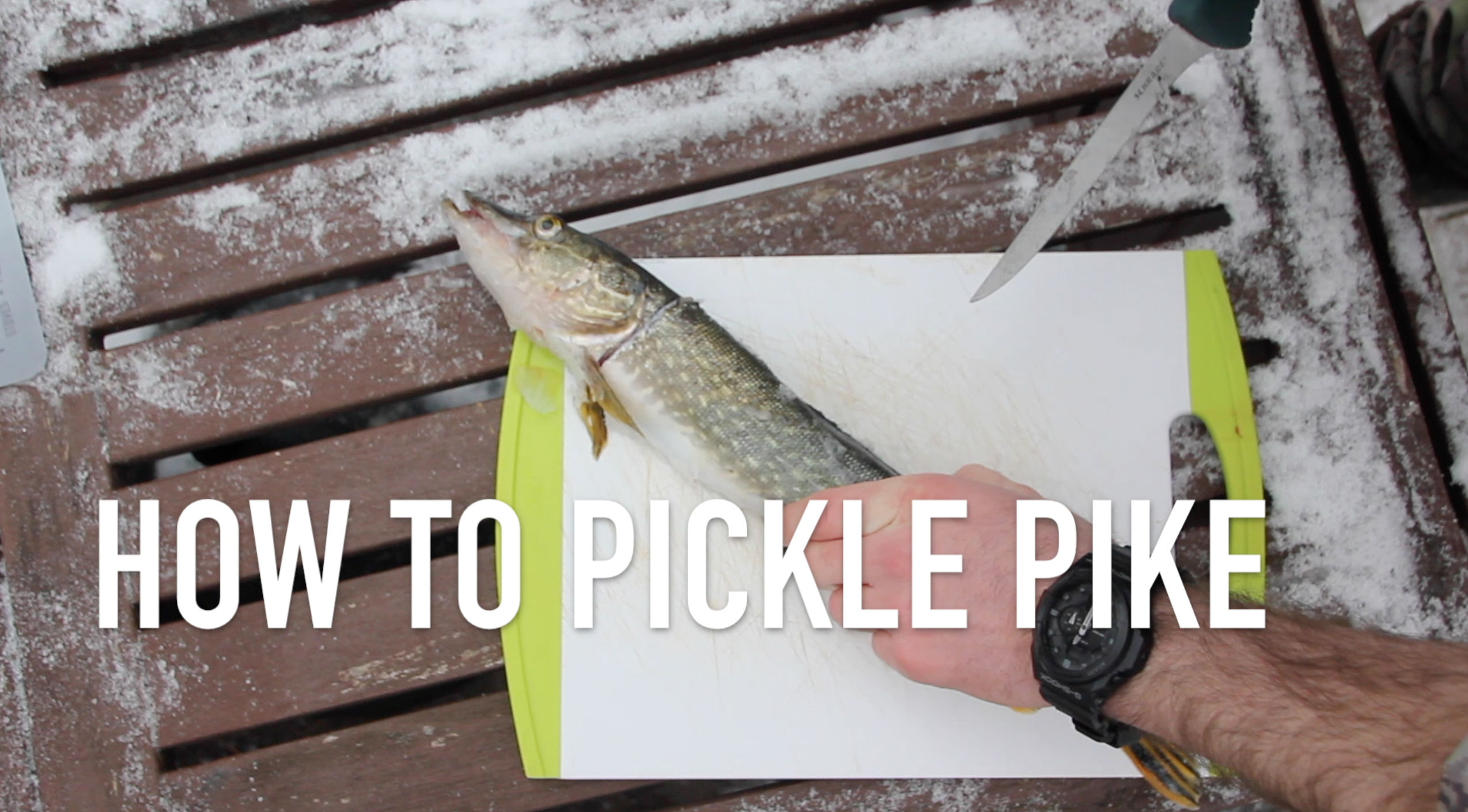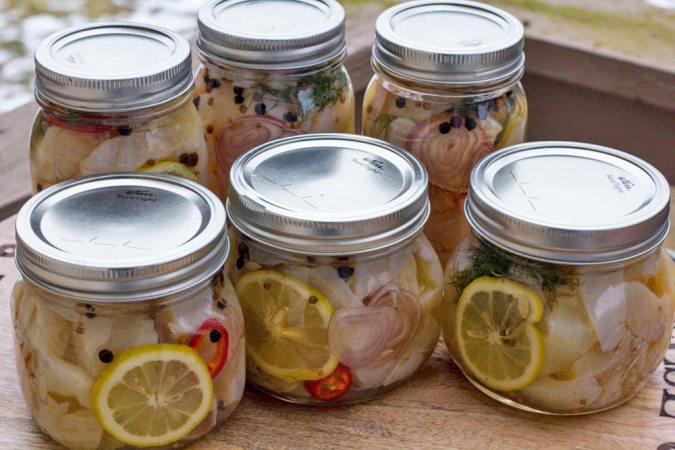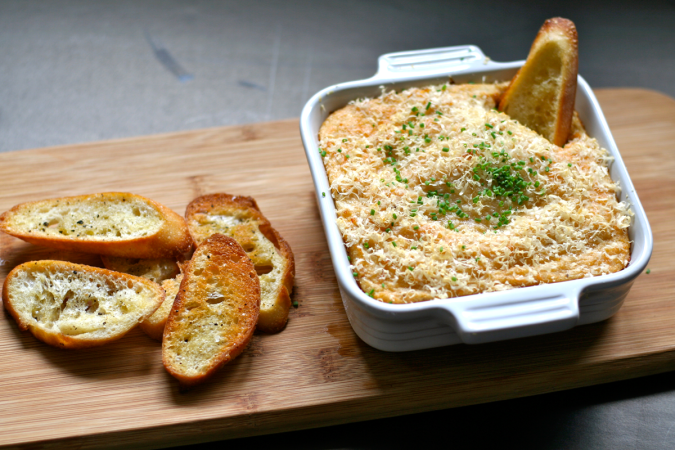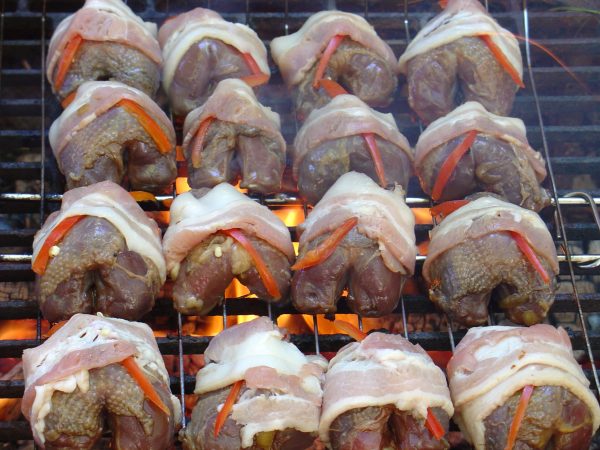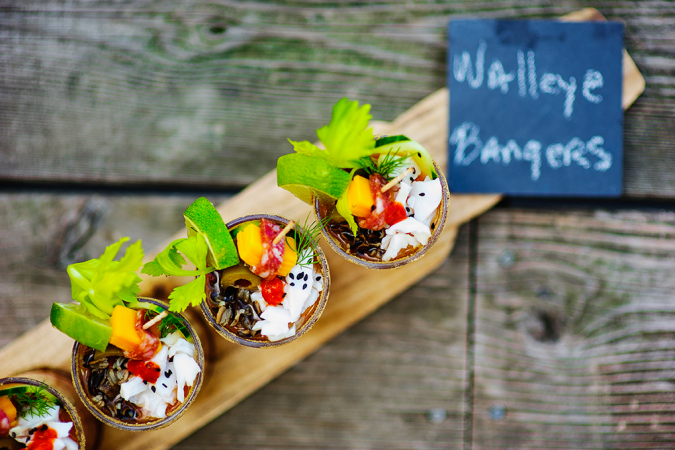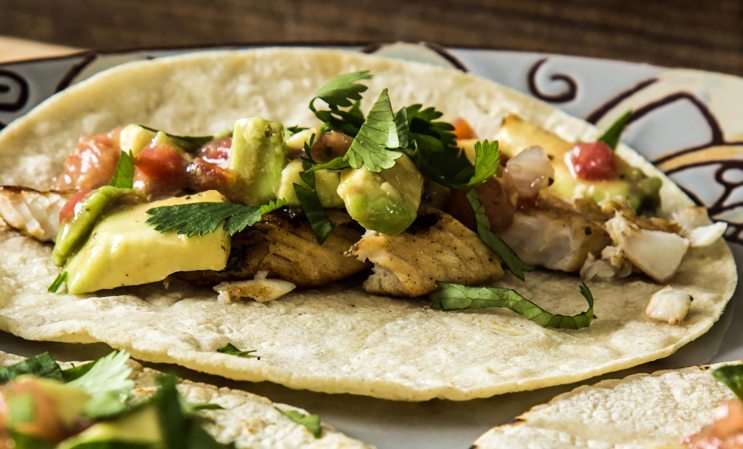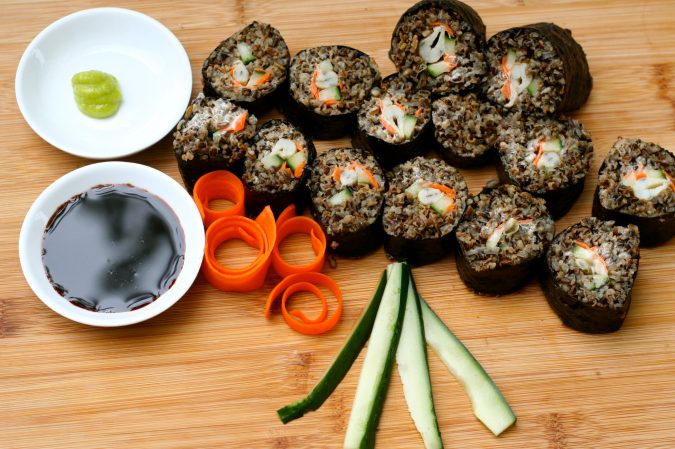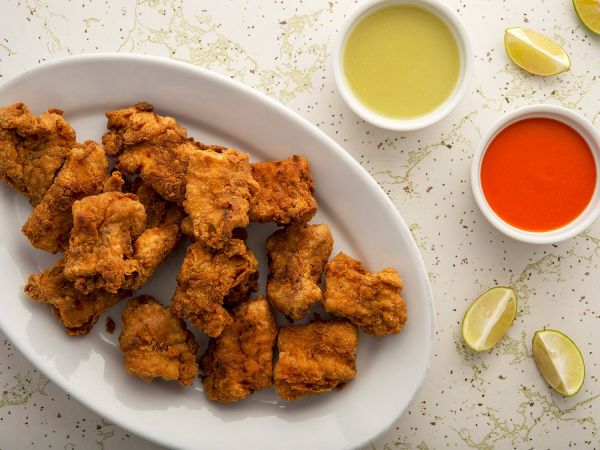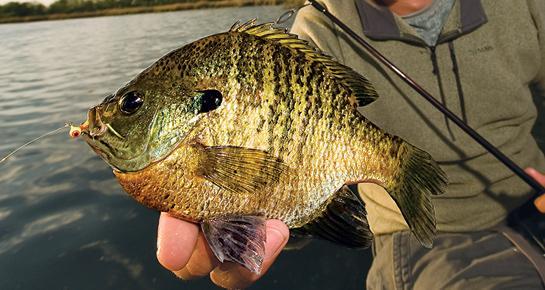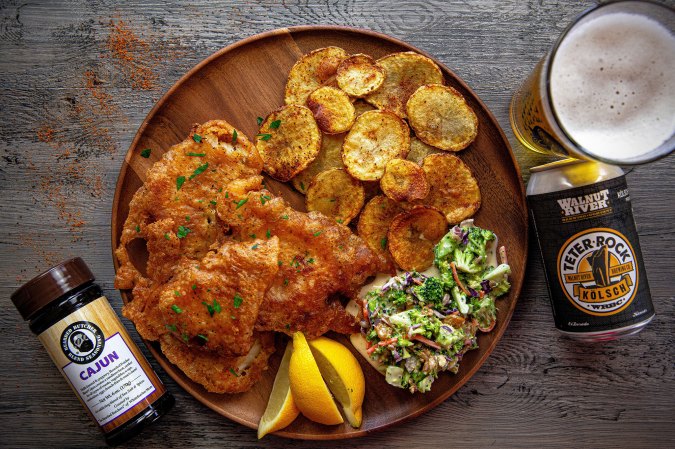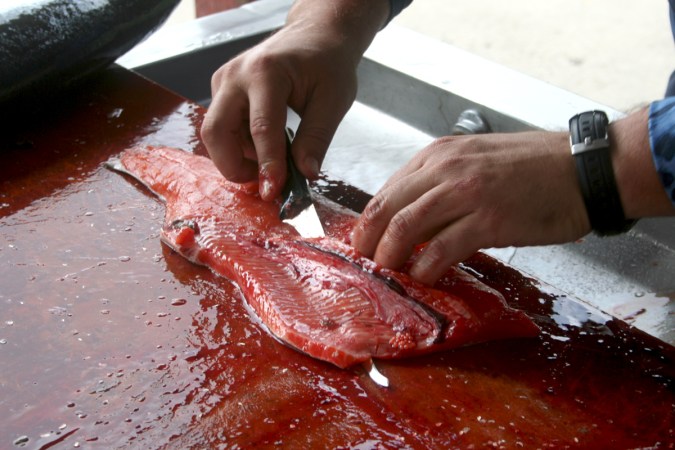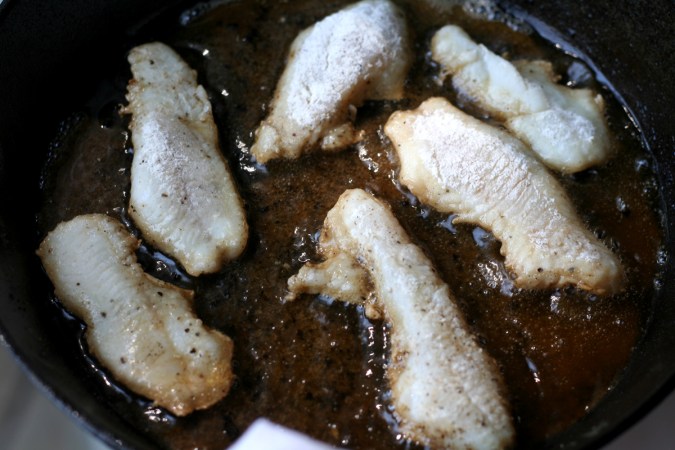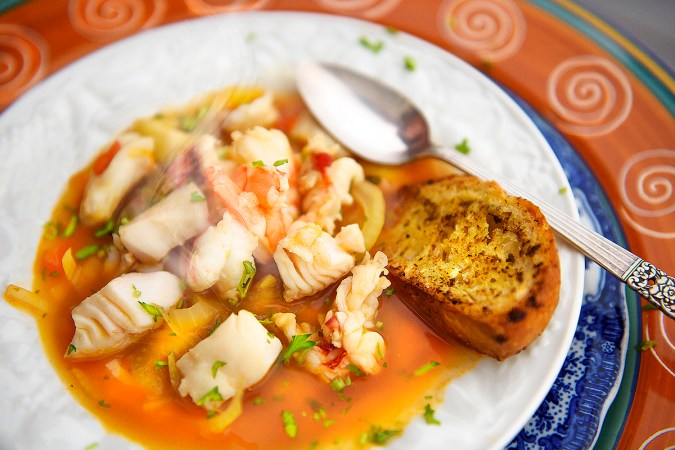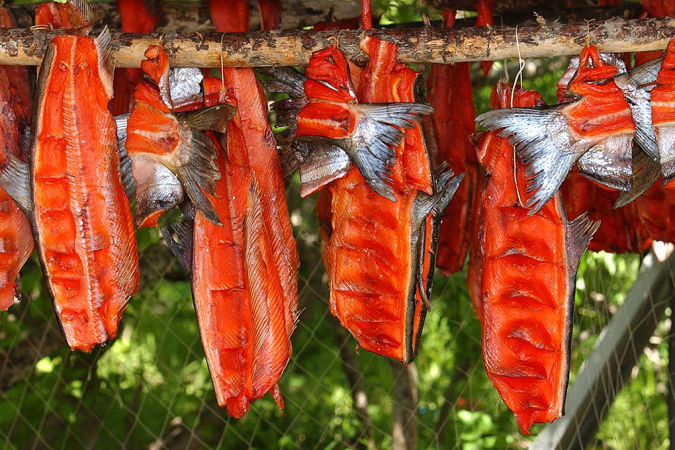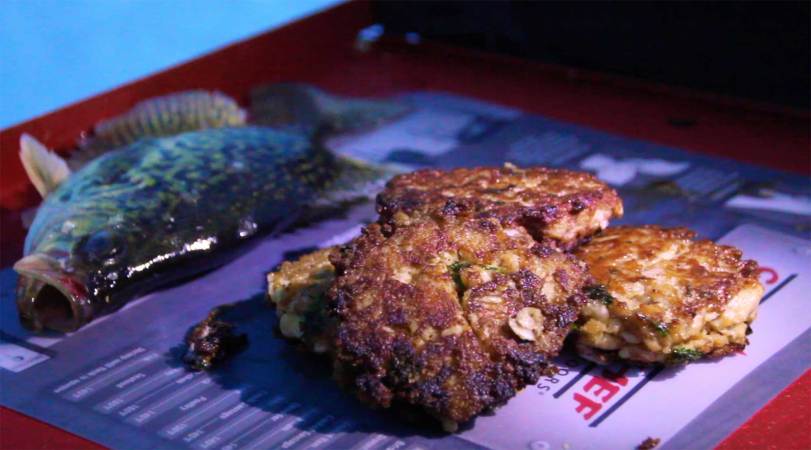In the upper Midwest, where I do most of my fishing, there are a ton of lakes that are infested with small pike. These fish are fun to catch on light spinning tackle, but they can be tough to eat. Pike meat tastes great, but pike fillets have a line of y-bones running right through the middle of them. On mid-sized pike (24-30 inches) it’s easy to remove these y-bones. On the snake pike, it’s hard to remove the y-bones and still get a good-sized fillet. So fishermen usually keep the mid-sized pike and throw back the littler guys. On lakes that see pressure, this creates a fishery that’s caught in a cycle of lots of little pike, a few mid-sized pike, and even fewer trophy pike.
And that’s where this recipe comes to the rescue — the pickling process dissolves the y-bones so you can keep those snakes and throw back the bigger pike. You’ll stock up on sweet, pickled pike and help improve your local lake’s fishery. The meat turns out firmer than you’d expect and there’s not even a taste of “fishy” flavor. With some onions and a cracker, it’s an unbeatable appetizer.
So follow this recipe, pickle pike, and spread the good word.
Ingredients
- White wine
- Sugar
- White vinegar
- Canning salt
- Pickling spice (tied in a cheese cloth bag)
- White onions
Directions
Fillet the pike and remove the skin. Leave the y-bones in (these will dissolve during the pickling process). Cut the fillets into 1-inch chunks. Freeze the fish for at least 48 hours as a precaution to kill off any parasites.
In a large bowl that will fit all of the pike, make a salt brine using cool water and canning salt. The brine needs to have enough salt to float an egg (keep adding salt and mixing until and egg floats at the top of the brine). Then, add the pike chunks. Cover the bowl and refrigerate for at least 48 hours.
Next, remove the fish from the salt brine and rinse with cool water. Place the fish back in the bowl and soak in white vinegar. Cover the bowl and refrigerate for at least 48 hours.
Remove the fish from the vinegar and rinse in cool water. Now it’s time to make the pickling brine. In a pot, add a 1/2 cup of white wine, 1 1/2 cups sugar, and 2 cups of white vinegar. Simmer the mixture on the stove and stir it until the sugar dissolves. Then remove from the stove and let it cool.
While the pickling brine is cooling, make your spice packets. Take a small handful of pickling spice (we used McCormick) and wrap it in cheesecloth. Tie the cheese cloth with butcher’s string. Putting the spice in a packet ensures that you won’t chomp into the spices when it’s time to eat the pike.
With the spice packets made and the brine cooled, it’s time to start pickling. In a small or medium Mason jar add a layer of thinly sliced onions (the thinner the better) and then a layer of pike. Add another layer of onions and then a layer of pike until the jar is 3/4 full. At that point, throw in the pickling spice packet and top off the jar with pike and onions. Then pour in the brine so that the jar is completely full. Seal the jar and refrigerate for at least seven days. After that, you’re ready to bust out the crackers and dig in. Keep the fish refrigerated even after it’s fully pickled.
This is a pretty long process so you’ll want to pickle your pike in big batches. Scale the ingredient measurements up as needed. And if you like a little more spice, add whole black peppercorn and cayenne pepper.

